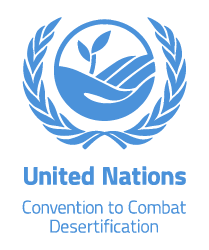Location
The United Nations Convention to Combat Desertification in Those Countries Experiencing Serious Drought and/or Desertification, Particularly in Africa (UNCCD) is a Convention to combat desertification and mitigate the effects of drought through national action programs that incorporate long-term strategies supported by international cooperation and partnership arrangements.
Members:
Resources
Displaying 61 - 65 of 585Two decades of farmer managed natural regeneration on the Seno plain, Mali. Included in Restoring African Drylands
The adoption of FMNR increased by 50% over 20 years; about 90% of all farmers now encourage natural regeneration on the land that they manage. The key to success is having local institutions that are respected and effective. The experience in Bankass shows that reforestation rates of at least 250 trees per hectare can be achieved by farmer managed natural regeneration on Sahelian agricultural lands, recreating an agroforestry parkland at a fraction of the cost of establishing conventional plantations.
Africa SDG Index and Dashboards Report 2020
The 2020 Africa SDG Index and Dashboards Report provides an assessment of where African countries stand with respect to the SDGs and their progress toward the goals, with the additional lens of “leave no one behind.” The report also includes a preliminary analysis of the impact of COVID‑19 on the SDGs in Africa.
Restoration of agricultural landscapes and dry forests in Senegal. Included in Restoring African Drylands
In the above initiatives, self-motivated populations increased food security and reduced vulnerabilities to climatic shocks by restoring and sustainably managing local forest resources. To regenerate agroforestry parklands, farmers built on traditional systems to increase on-farm tree density and convert degraded lands to densely wooded savannas. These actions increased crop yields and produced new sources of livestock browse. The population of Sambandé restored the local forest and managed it to sustainably produce fuel and fruit.
History and impacts of dryland restoration in Yatenga, Burkina Faso. Included in Restoring African Drylands
Since the mid-1980s, the positive impacts of these simple, cost-efficient water harvesting techniques become clear, following their increasingly widespread adoption. Their use has allowed smallholders to reverse land degradation, improve soil fertility, sustainably increase crop production, achieve food security, and create more productive, diverse and resilient farming systems. At the same time, groundwater is recharged, improving access to drinking water for the entire year, and creating opportunities for irrigated vegetable gardening around wells.
Living Planet Report 2020 - Bending the curve of biodiversity loss.
The Living Planet Report 2020 shows that there is an opportunity to heal our relationship with nature and mitigate risks of future pandemics but this better future starts with the decisions that governments, companies and people around the world take today. World leaders must take urgent action to protect and restore nature as the foundation for a healthy society and a thriving economy.


